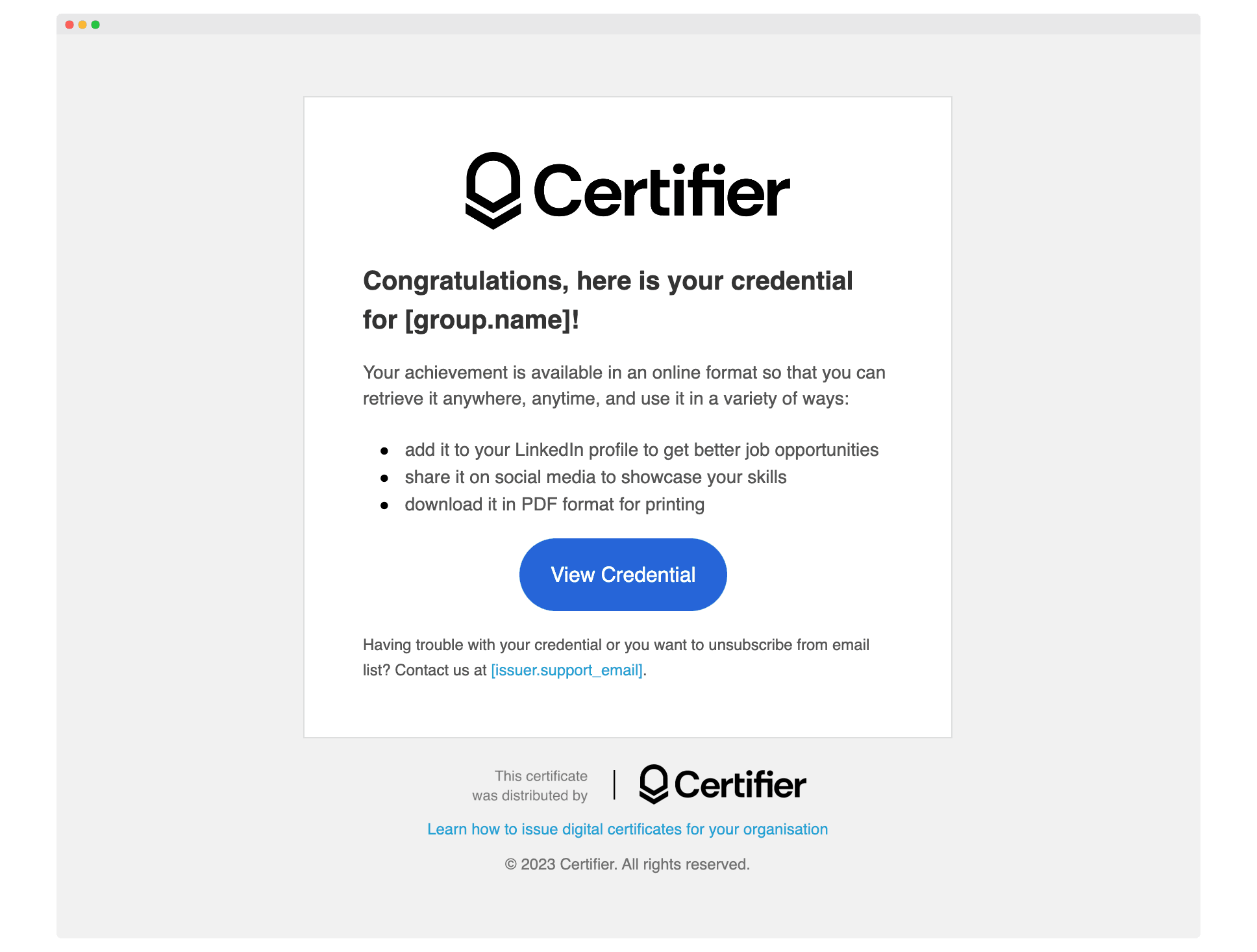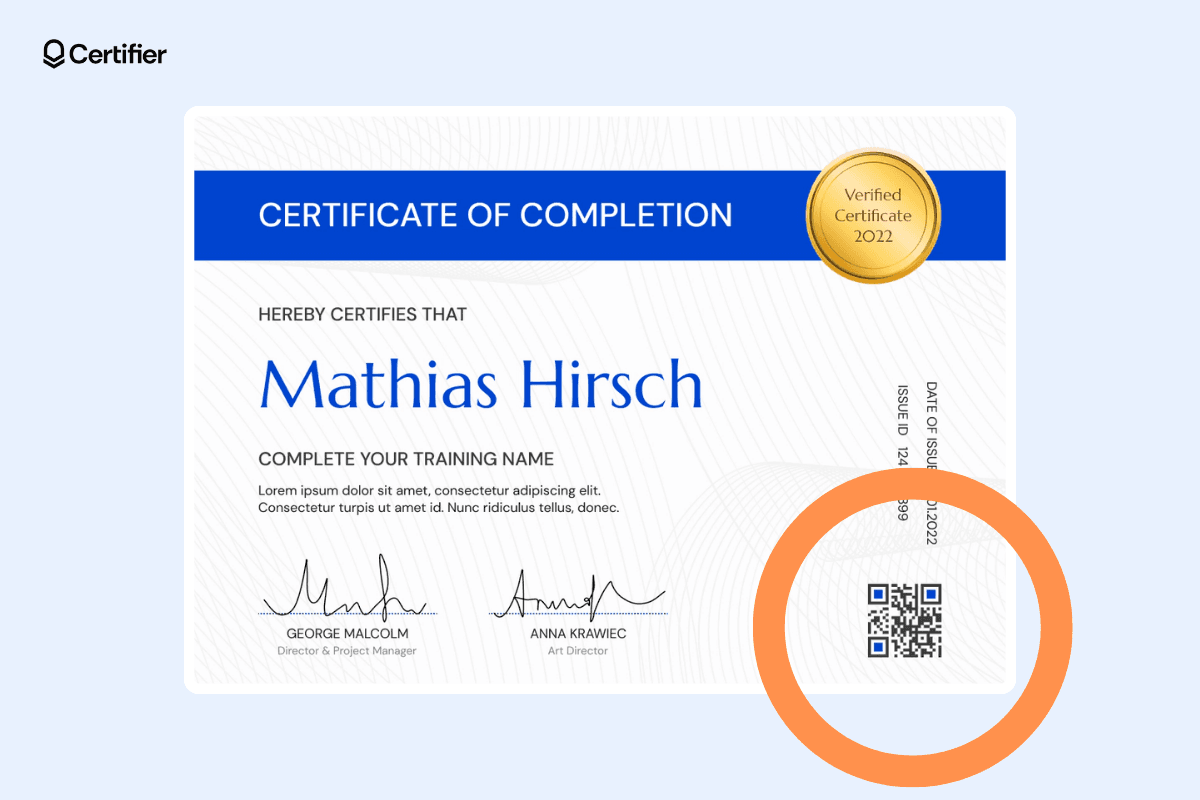Trusted by:
Updated: July 23, 2025
9 min read
Guide to Digital Certificates in Continuing Medical Education (CME)
Want to finish your Continuing Medical Education courses with digital certificates? Check out our guide to find out the benefits of digital certification and get tips on how to implement it effectively.
Based on the U.S. CME Market Report, in continuing medical education (CME), gamification is one of the fastest-growing learning trends.
There is a need for a more dynamic way to collect knowledge, and such solutions start to complement traditional educational methods.
Digital certificates represent a giant step forward in this future of health care education.
What is digital Continuing Medical Education (CME)?
Digital Continuing Medical Education (CME) is a concept of ongoing online learning for healthcare professionals. It helps them keep up with the rapidly evolving medical procedural skills via online sources. It improves their work and interactions with others to provide better patient care.
6 Why(s) to choose digital certificates in the Continuing Medical Education program
Here are reasons why digital certificates should be a part of innovative Continuing Medical Education programs.
#1 Automated certificate generation to streamline CME credentials
Automated certificate generation is a system that automatically creates certificates for medical staff upon completing their Continuing Medical Education activities.
Among the main key benefits of automated certification for education providers are:
Reduced time required to generate and distribute certificates from hours to minutes.
Minimized the number of human errors
Instant distribution after CME activity completion so participants get the proof of accomplishments right away
Ability to handle a large volume of certificates
What does certificate automation look like in action?
If you use a certificate platform like Certifier, you can input dynamic attributes into your certificate template. These are like blank spaces in your template that tell the Certifier what kind of information goes where. For example, use [recipient.name] where you want the person's name to appear. Simply click on the attributes to set them up. You can even create your own.

Learn more about dynamic attributes and automation in the certification process.
#2 Easy distribution through email and direct download
Digital CME certifications offer easy distribution.
Unlike traditional paper-based certificates, which must be printed and mailed – digital medical certificates can be distributed effortlessly, almost within seconds.
With just a few clicks, educational providers can send digital certificates to a large number of recipients. Whether it's tens, hundreds, or even thousands of health professionals, everyone can receive their certificates simultaneously.
What is the fastest way to distribute certificates?
Compile all the data into one master spreadsheet. It includes names, the recipient’s email address, the completed CME course, and any other relevant details.
Once your spreadsheet is ready, you'll upload it to the digital certificate platform (Certifier works well with Google Sheets and Excel files).
Next, you'll configure the email settings, such as the email template and its branding.

With everything in place, you hit the 'Send’ button. The platform then automatically generates a personalized certificate for each recipient and attaches the certificate to an email with instructions on how to download it.
#3 Real-time tracking and verification for accreditation bodies
Digital certificates simplify performance measures and verification.
Once a certificate is issued, it's immediately recorded online. It means no waiting around – accreditors can check a participant completion status on the spot.
Look at the example. The Certifier dashboard shows the exact status of the certification (whether it was sent, opened, bounced, or even shared).
Imagine a physician who has just finished a critical clinical medicine module. The moment they complete the virtual course, their achievement is recognized with a digital certificate of attendance. There's no lag time.
The accrediting body can immediately react to this update. They log in, generate the certificate, and send it. It's that simple.
No more lost documents and no delay. It's a direct line from course completion to verified certification. It means providers can quickly issue certificates that are automatically recorded, easily keeping everyone updated with minimal effort.
#4 Long-term accessibility
There are many occasions in which medical professionals need to showcase their Continuing Medical Education (CME) credits – job transitions, license renewals, or credential verifications.
Digital certificates offer a reliable and convenient solution for this need. They are resistant to loss or physical damage. They're stored in the cloud, where they can be accessed at any moment, from any place (provided you have internet access).
For health care professionals with lifelong learning, this means a simpler way to prove their credentials and professional performance. With just a few clicks, they can demonstrate their CME accomplishments to employers or regulatory authorities.
#5 Robust security measures and compliance with standards
Continuing education security is a non-negotiable in the medical field. Medical education and training require constant professional development and maintenance of certification.
With digital credentials, providers can easily set up the certification expiration date. The security of these digital certificates is unmatched. As soon as the certificate needs a refresh, it will just expire. And their encrypted links to certification data reduce the risk that fraudulent documents circulate within the medical community.
There are also QR codes that add another layer of security.
They are digital marks that can be scanned to verify the authenticity and details of the certificate.

[Get this free certificate template]
What are the benefits of QR codes for CME certification security?
QR code on a CME certificate locks in key details about the certificate, such as the issuer, the date of issue, and other relevant validation data. After a certificate has been issued, it's hard to change it.
Any smart device with a camera can be used to scan a certificate and confirm its authenticity. It’s essential to maintain the integrity of CME credentials.
The special coding inside QR codes means it's really hard for someone to make a fake certificate that looks real.
#6 Integration capabilities
For CME program providers, the ability to integrate digital certificates into existing systems via platforms like Certifier is a significant efficiency booster. With Certifier integration capabilities, these certificates can easily work with Learning Management Systems (LMS), professional databases, and other educational infrastructures.
It all happens smoothly, without extra work.
The moment a student achieves successful completion of an online course, their achievement can trigger an automated task cascade – records update to educational activity, signing up for the next level course, or sending out a 'well done' email.
The options are endless. Especially if you use Certifier and its wide range of integration with over 5,000 apps and services via API, Zapier, Make or Pipedream integration.
Watch this step-by-step tutorial to automate your certificate workflows:
> Do you want to start? Here’s the guide that shows you how to implement automated digital certificates into your course.
How to maximize the CME impact with digital credentials?
How to make a mark with Continuing Medical Education (CME) programs using digital credentials? As a CME provider, you can achieve this in these clear ways.
Comply with accreditation standards
Digital education courses should correspond with the high standards of CME accreditation bodies. The educational content should be current and relevant at all times. Implement features like encryption and access controls to safeguard personal information and uphold the prestige of the credentials.
Promote your CME programs
Leverage the digital format of certificates in a marketing strategy. Point out how easy they are to share online and the plus side of going digital – like cutting down on paper waste. This approach to learning will likely resonate with a crowd that's keen on digital solutions and sustainability.
Provide support and guidance
Offer clear instructions and support for learners and employers on how to use and verify digital credentials. This could be a set of straightforward FAQs, step-by-step videos, or even a dedicated support line. The goal is to make learners and employers familiar with digital credentials without any hassle.
Engage learners
Use digital credentials as a tool to increase engagement. Provide award badges for course completion or milestones within a curriculum. Participants can then share these credentials on professional networks. They not only celebrates their accomplishment but also passively promotes your CME programs in health care industry.
The future of CME
The move towards digital credentials is transforming how health care providers continue their education. It's making things quicker and simpler – and adds value to every certificate earned.
For CME providers looking to keep pace with this change, it's time to consider digital certificates seriously. All for more convenient and secure CME programs.
Ready to take the next step? Explore the benefits of digital certification. Certifier is here to guide you through every step. Join for free and create an effective medical education environment.
FAQ about Continuing Medical Education
Here is the list of the most frequently asked questions related to the CME program topic.

- SaaS Growth
- Digital Credentials
- APIs
- Product Marketing
- Company Operations
CEO and Co-Founder
Sergey is CEO and Co-Founder of Certifier, a Forbes 30 Under 30 honoree building digital credential infrastructure for 2,000+ organizations worldwide and shaping the future of credentialing.


